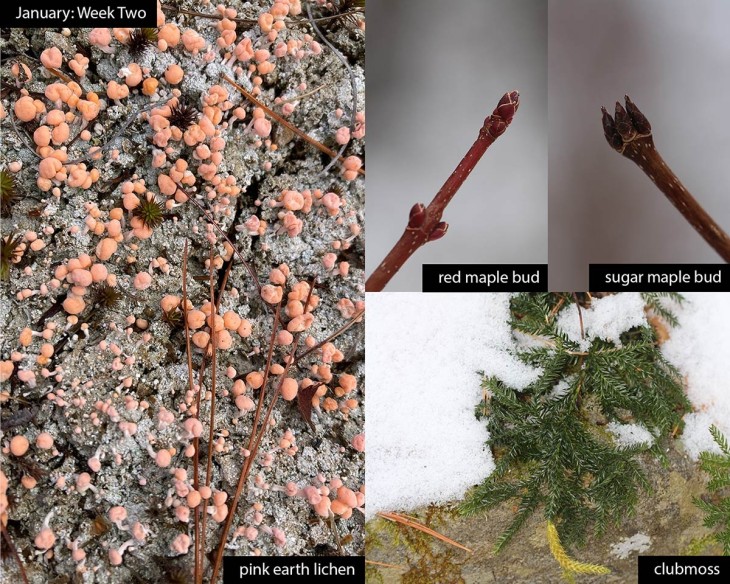This week in the woods, we found the tiny, stalked fruiting bodies (or apothecia) of pink earth lichen. This colorful lichen prefers disturbed areas and the full sun of settings such as roadsides – or a ridgetop clearing in West Fairlee, Vermont, where a gap in the snow revealed these specimens (along with a smattering of juniper haircap moss). Lichens’ responsiveness to temperature and moisture allows them to survive in the cold, dry winter months: they swell on damp days and shrivel and go dormant on dry ones, and when wintry conditions lapse even temporarily, lichens can often speedily resume photosynthesis. As Rachel Sargent Mirus writes in this Outside Story article, many lichens produce useful compounds, such as antifreeze proteins or proteins that kickstart ice crystal growth and make an insulating layer of ice. These adaptations have enabled them to cover approximately 7 percent of the planet’s surface, much of it in open, treeless northern regions with longer winters.
These red maple and sugar maple buds formed this past summer. The trees have withdrawn water to protect the buds from frost damage, and overlapping scales shield the tiny leaves and flowers from the elements until they emerge months from now. (For more on winter tree buds, see this Outside Story article by Susan Shea.)
Clubmosses are perennial evergreens and share some characteristics for winter adaptation with the conifers they resemble in miniature. Succulent leaves covered in waxy material minimize water loss, an antifreeze-like substance prevents cells from freezing and bursting, and vitamins C and E (among other chemicals) intercept and neutralize the electrons that result from photosynthesis and would otherwise damage cells in cold weather.
What have you noticed in the woods this week? Submit a recent photo for possible inclusion in our monthly online Reader Photo Gallery.


